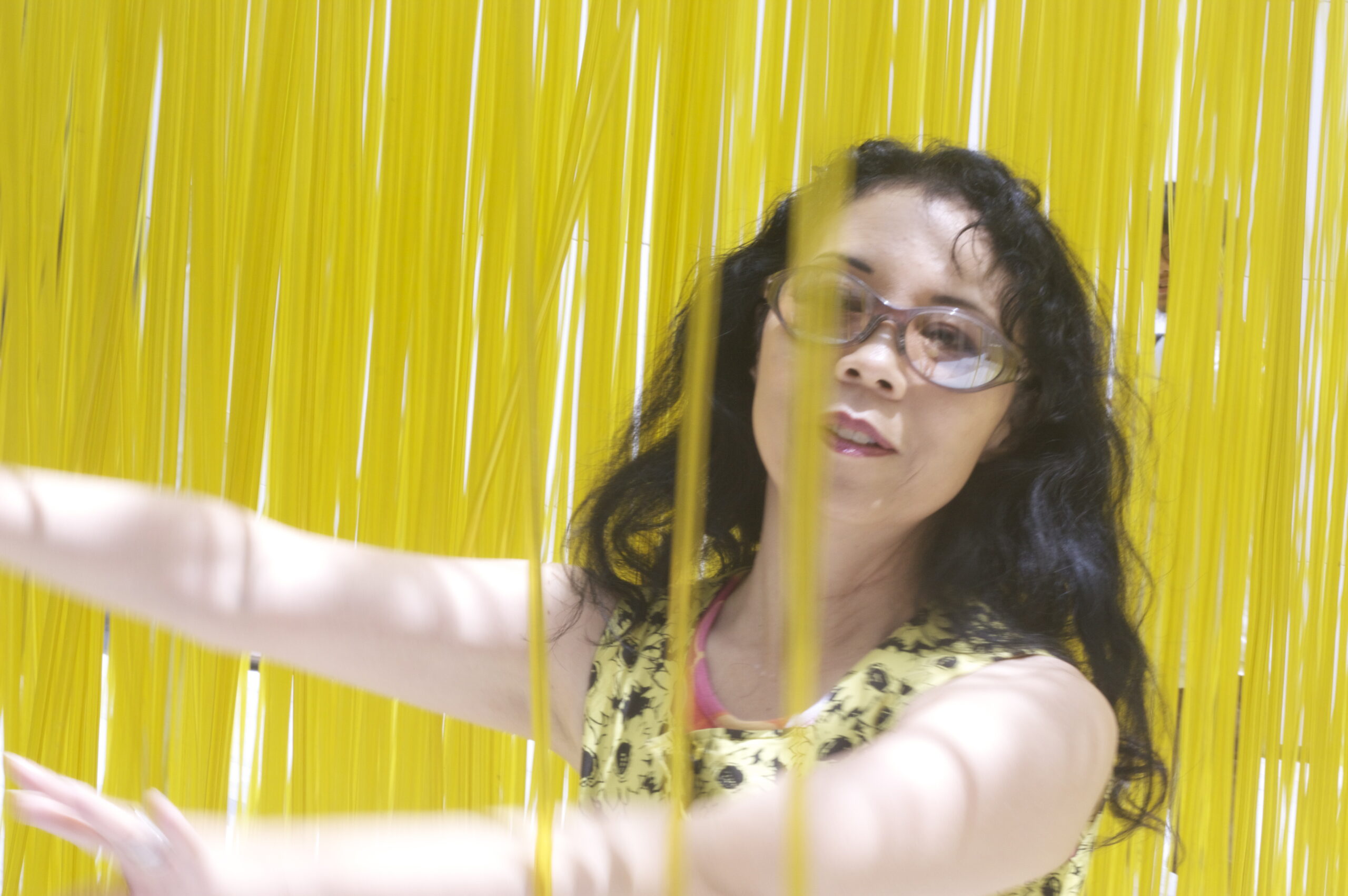 The Kobayashi movie “Harakiri (2011) is available on Hulu and Netflix. Miike’s “Hara-Kiri: Death of a Samurai” is available on Amazon.com.
The Kobayashi movie “Harakiri (2011) is available on Hulu and Netflix. Miike’s “Hara-Kiri: Death of a Samurai” is available on Amazon.com.
In this remake of the Masaki Kobayashi movie known as “Harakiri” (1962) in America, but “Seppuku” in Japan, Takashi Miike considers the value of one life or “Ichimei.” (一命 Ichimei). In the U.S., the film is also re-named “Hara-Kiri: Death of a Samurai.”
Seppuku is the appropriate pronunciation of the characters 切腹 while hara-kiri takes the second character and reverses the order 腹切り. Oddly enough two of my Japanese to English dictionaries, translate the Japanese into hara-kiri. Harakiri has entered the English language as well as become a part of other foreign languages (e.g. the French journal “Hara-Kiri,” the Venezuelan rock band’s 1996 album “Harakiri City,” a 1919 German film “Harakiri,” a 1928 and 1996 Dutch film “Hara-Kiri” and a 2000 Dutch film “Harakiri.”)
Words are, in my opinion, an important part of this movie as is history. In English we are focused on death while in the Japanese version, the title “Ichimei” (one life or command) seems to focus on life. Please note that in the historical section names are given surname first while in the movie discussion, names are given name first.
Historical background
The Tokugawa shogunate and its restrictive samurai class system were founded by Tokugawa Ieyasu. His childhood wasn’t meant to inspire warm feelings. Ieyasu was originally from what is now Aichi prefecture. His mother and father were young (17 and 15) step-siblings and two years later, they were separated and would eventually remarry (providing Ieyasu with 11 half-siblings).
Ieyasu was born Matsudaira Hirotada 松平 広忠. He was kidnapped and held hostage from age six until he was 15. He changed his name to Matsudaira Jirōsaburō Motonobu (松平 次郎三郎 元信) and a year later, when he married, he changed his name again to Matsudaira Kurandonosuke Motoyasu (松平 蔵人佐 元康). He fought against Oda Nobunaga but eventually became allies and married one of his daughters in 1563. Takashi Miike has dealt with the Matsudaira family before in his 2010 “13 Assassins,” which was also a remake–of Eiichi Kudo’s 1963 black and white movie “Juusan-nin no shikaku.” In the 2010 movie, the assassins mean to kill a young sadistic lord, Matsudaira Naritsugu.

By 1567, the man born Matsudaira Hirotada finally became Tokugawa Ieyasu, implying some relation to the emperor. By 1579, his wife would be executed and his eldest son forced to commit seppuku after being accused of conspiring to kill Oda Nobunaga. When Nobunaga died, Ieyasu sat out while Toyotomi Hideyoshi fought Shibata Katsuie for power over Japan, but in 1584, Ieyasu supported Oda Nobunaga’s heir Oda Nobukatsu. Toyotomi Hideyoshi negotiated a peace and would take a hostage in the form of adopting Ieyasu’s son. Ieyasu would give up his territory and move to the Kanto region which had been home to the defeated Hojo clan.
Hideyoshi was based in Nagoya and when he died in 1598, his heir was only five. By 1600, the country was again at war and at the Battle of Sekigahara, Tokugawa Ieyasu won. Hideyoshi’s heir, Hideyori, became a regular daimyo (as opposed to a ruler), and the daimyo were divided into fudai (those who were loyal to Tokugawa before this battle) and tozama (those loyal after the defeat).
Hideyori would rise to challenge Ieyasu resulting in the siege of Osaka Castle (1614-1615) and the eventual death Hideyori, his mother and Hideyoshi’s widow, and Hideyori’s infant son. His wife, the granddaughter of Ieyasu, would live and return to Edo.

What happened next was an institutionalization of the hostage system. Obviously during the Warring States period, the hostage system had already been used and Tokugawa Ieyasu had survived it. The law sankin-kotai was adopted in 1635 (参勤交代) under the third shogun, Tokugawa Iemitsu (the eldest son of Tokugawa Hidetada and the grandson of Tokugawa Ieyasu). The daimyo were required to visit Edo periodically and maintain a residence there that reflected their rank. From every six months to alternate years, a full retinue of the daimyo would travel certain routes to the Edo for this purpose. When the daimyo were not in Edo, part of his family was to remain. Maintaining a separate residence and the cost of travel prevented the daimyo from building up a financial reserve required for war and in addition left the Tokugawa shogunate with hostages in case of hostilities. This would result in 200 years of peace, but it would eventually end as over two centuries the tozama clans became embittered. For the merchant class, which according to the class system was the lowest in the hierarchy, this meant an economic boom as the sankin kotai system built up the travel industry.
In “Seppuku,” the action takes place between 1619 and 1630–this is long before the events of “13 Assassins” which took place in the 1840s. Hanshiro Tsugumo was formerly a samurai for Fukushima Masanori. The real Fukushima was awarded Hiroshima castle by Tokugawa Ieyasu. The castle was originally built by Mori Terumoto who was one of Toyotomi Hideyoshi’s Council of Five Elders and opposed Tokugawa Ieyasu although he was not at the Battle of Sekigahara. Mori Terumoto was defending Hideyoshi’s heir at Osaka Castle during Sekigahara.

Fukushima would not possess the castle for long. After flooding in 1619, Fukushima repaired the castle without permission from the Shogunate. As a result, he was banished to Nagano prefecture and another lord, Asano Nagaakira, took over. The castle would be destroyed on 6 August 1945 in the atomic bomb blast.
In the movie, the great house in Edo where the suicide takes place belongs to the Ii (or Iyi) daimyo. Ii Naotaka was part of the armies laying siege to the Osaka Castle. His family was fudai and his father had been one of Tokugawa Ieyasu’s Four Great Generals (Honda Tadakatsu, Sakakibara Yasumasa, Sakai Tadatsugu, and Ii Naomasa). The Ii clan had the Hikone Castle in Hikone, Shiga Prefecture (completed in 1622).

 This is where the connection between the white cats comes in. As a celebration of the 400th anniversary of Hikone Castle, a mascot, Hiko-nyan was adopted to promote tourism. Nyan is the onomatopoeia for a cat’s meow in Japanese. This will be further discussed below.
This is where the connection between the white cats comes in. As a celebration of the 400th anniversary of Hikone Castle, a mascot, Hiko-nyan was adopted to promote tourism. Nyan is the onomatopoeia for a cat’s meow in Japanese. This will be further discussed below.
“Seppuku” versus “Ichimei” or 1962 versus 2011 versions of “Harakiri”
Masaki Kobayashi’s 1962 version of “Seppuku” is filled with light and explanations. His version is like prose while Takashi Miike’s 2011 “Ichimei” is like haiku with images and atmosphere creating a mood. Thematically, the movies have the same intent: To show the hypocrisy of the samurai system and how the rigidity of the samurai code (bushido) caused clear conflicts between love and duty.



This is different from the more common class-crossing love stories where aijo (romantic love) and giri (duty) are portrayed because the main character in these two movies, Tsugumo, is burdened by paternal love and despite his economic fall, he remains within the same class. All three main characters are of the same class: samurai.
Kobayashi’s movie begins in at the sunlit estate of the Ii clan on 16 May 1630 as a masterless samurai Hanshiro Tsugumo (Tatsuya Nakadai) comes looking for a place where he might commit ritual suicide having fallen into poverty and because he was previously in the service of the great Fukushima clan. However, by this time, samurai have been making such requests at various households, looking to receive money and be sent away without being asked to commit suicide. Yet the Kageyu Saito (Rentaro Mikuni) tells Tsugumo that this isn’t the case with this clan.
Just a few months prior, a young samurai, Motome Chijiiwa (Akira Ishihama), came to this estate and was forced to make good on his threat–but because he had already sold his “soul” (the blade of his sword) and his blade had been replaced by bamboo to hold it in its scabbard, the samurai of this estate forced him to use the bamboo blade to commit suicide. Chijiiwa had been born in the service of the Fukushima clan as Tsugumo, Fukushima.


Tsugumo isn’t deterred by this tale and as he prepares to commit seppuku, he declines to change into finer garments and asks to have the second of his choosing: Hikokuro Omodaka (Testuro Tamba). Yet Omodaka isn’t in attendance. Tsugumo then requests Hayato Yazaki (Ichiro Nakaya) and Umenosuke Kawabe (Yoshio Aoki). These two are also mysteriously absent and will later claim a grave illness.

Yet Tsugumo reveals that he was the father-in-law of Chijiiwa and the young samurai had only sought to provide medical care for his son Kinjo and his wife Miho. Now both Kinjo and Miho have died and Tsugumo is alone. He describes their impoverished existence and we first see the young Chijiiwa and Miho in a book filled room. In the background are cherry blossoms. When their daimyo is banished, Chijiiwa’s father commits seppuku and begs Tsugumo to take care of his son. Moving from the Hiroshima area to Edo, they live a life in poverty. Chijiiwa teaches, but cannot find other work because he isn’t allowed by his class to work as a day laborer. In the end, with his son feverish and his wife weakened by what we suppose is tuberculosis, Chijiiwa goes to find money without telling his father-in-law where. His body is returned to a horrified Tsugumo who learns that the Ii clan wouldn’t even offer the boy the kindness of a steel blade.
This still fails to impress Saito although Tsugumo warns that this fate could easily befall any of the samurai present. We clearly see Chijiiwa’s conundrum–he has given his word to return and he has given his word to commit suicide. By doing one, he has broken his word to his family, but the Saito mistook this as a dishonorable samurai attempting to get out of seppuku.

Tsugumo knows that the three missing samurai aren’t ill; they are embarrassed, having lost their samurai topknot ponytail to him in one-to-one combat. They feign illness in order to wait until the hair has grown back. When he reveals this to Saito, Saito is presented with a conundrum of honor and honesty. Saito orders his samurai to kill Tsugumo, but these men haven’t been trained in battle unlike Tsugumo and he wounds eight and kills four. As if affronted by the ceremonial display of the famously red laquered armor of the Ii clan, he knocks it down.
In the end, Tsugumo will attempt to commit suicide and die with honor after killing some of the samurai of the Ii clan, but he will be shot instead by a group of retainers with guns. Saito orders Kawabe and Yazaki be told to commit seppuku and if they refuse, to be forced into suicide. Omodaka has already committed suicide. Their three deaths as well as the additional four will be reported as resulting from illness so that people will not know of their disgrace before a masterless samurai.
The name of the character Hanshiro has the intimation of death. The shi stands for four, which is considered an unlucky number in Japan (and China). Hanshi sounds like the first part of an idiomatic phrase: hanshihansho. The phrase means half dead half alive. The name of the son, Motome, means a request or a demand. And the last name suggests father so with each mention of this name, you cannot help but remember the father and his request.
The soundtrack of the original movie draws more from traditional Japanese instruments and the usage of the pine tree in the back of one screen reminds one of Noh drama which was supposedly for the more refined classes such as the samurai as opposed to Kabuki. The appearance of sakura makes one think of how life is short and the showdown between Tsugumo and Omodaka reminded me of Basho’s poem about summer grasses covering a field where samurai once fought. When we first see Saito, the screen behind him has a great tiger painted on it, a creature that neither the artist nor the samurai could have possibly seen as tigers do not exist in Japan.
Would a Japanese person think of phrases like 虎の威を借りる (“borrow the majesty of a tiger”)、虎は死して、皮を留め、人は死して名を残す (“in death a tiger leaves his skin while a person leaves his name”).
<img alt="ichimei_Koji Yakusho.jpg” src=”https://static.rogerebert.com/redactor_assets/pictures/far-flung-correspondents/hostages-to-honor/ichimei_Koji_20Yakusho.jpg” width=”425″ height=”277″ class=”mt-image-center” style=”text-align: center; display: block; margin: 0px auto 20px;”>
Takashi Miike’s version filled with darkness and shadows. Instead of a tiger, the head retainer of the Ii clan (Koji Yakusho) sits in front of the painting of an ox. Given this is Miike, I wondered if this was Miike’s talisman or mascot. Think of his 2003 yakuza horror flick,”Gozu” ( “Cow’s Head”) or the flaming cows in “13 Assassins.” I can’t find the original movie to ascertain whether cows were a part of the original movie. The cows linked with Miike remind me of Mamoru Oshii and his usage of Basset hounds in his animation (“Ghost In The Shell” and “The Sky Crawlers”). Cows are certainly more common than Basset hounds in Japan, but not as common as they are in the American Midwest.
The ox is the zodiac animal who was fooled by the rat, but the word for ox, おうし, is written 雄牛, but sounds like 横死 which means violent death. Is this foreshadowing by word play?
In Miike’s version (screenplay by Kikumi Yamagishi), we see Chijiiwa as a child with Miho and the poverty is illustrated by the books that are slowly sold off. Miike’s Chijiiwa (Eita) is a slender man. He fits the concept of scholar over warrior, but also his build suggests one who has grown up with a lack of proper nutrition. Yet when he is propelled toward seppuku he gives less resistance than in the original movie.

In recent years, the castle Hikone has become associated with a white cat, the Japanese bobtail. So the usage of a white cat in Miike’s version would remind Japanese viewers of Hikone castle, even when we are with Chijiiwa and Tsugumo. That type of cat, the Japanese bobtail, is considered lucky (Hello Kitty is also a bobtail), but instead Miike chooses a long-tailed white cat. The pet of the Ii family is fat, with its belly hanging down. The cat of Miho and Chijiiwa is thin and eventually dies. Both are used to draw attention, a white reflective spot moving across the screen but also indicating the different economic situations.

In both movies, the kamon (family crest) of the Ii clan is the Mandarin orange. The story is basically the same. Miike seems to feel the viewer has no need for explanations about the different practices of seppuku. Instead, he gives us imagery. When Tsugumo (Ebizo Ichikawa XI) sits in the courtyard, we glimpse at the wood ranma of carved phoenixes. At one point, the architectural detail behind him appear to rise from his shoulders like stylized wings. The rebirth of a phoenix is explosive and destructive and suggests again violence in the rebirth of Tsugumo as a samurai.
Food plays a more important part in Miike’s film, emphasizing the poverty or the wealth. We see Kageyu Saito (Koji Yakusho) sucking on the sea snails that were roasted on a hibachi. He eats straight from the large shell, without the need for rice to supplement his meal. In contrast, we also learn that for Chijiiwa (Eita) the protein offered by a fresh egg was so precious and expensive for them that after accidentally dropping two that crack on the ground, he sucks the raw egg off straight from the dirt.
The family unit of Chijiiwa, Miho (Hikari Mitsushima) and Tsugumo split a rice cake and when offered a beautifully formed sweet, Chijiiwa saves it in his pocket even as he is forced to commit suicide. His request is for 3 ryo. A ryo is a gold piece that was worth about 60 monme (silver). I believe that the father only gets paid about 50 mon in one scene for all his work on the umbrellas. For one ryo, you need about 4,000 mon. Gold isn’t found in Japan, and there’s layering of meaning as the need for gold to save a child whose very name means gold (Kingo 金吾).
Miike doesn’t need to explain the poverty with dialogue. He shows it through the food, the cats and with the comparison of wages. Miike also compresses the battles between the three samurai who have their topknots taken and Tsugumo. Tsugumo is the only one of the four who has battle experience. He understands what it is to be a samurai. For the three antagonists (Munetaka Aoki as Omodaka, Hirofumi Arai as Matsuzaki and Kazuki Namioka as Kawabe ), it is all theory, words and arrogance.


Miike’s Tsugumo is a famous Kabuki actor, the 11th in a line to hold the name Ebizo Ichikawa. He had starred in an NHK drama series about the samurai Musashi Miyamoto. Koji Yakusho has also played samurai such as in 1983 when he played Nobunaga Oda, but he might be more familiar to American audiences for his role in Juzo Itami’s 1986 “Tampopo” or “Shall We Dance?” (1997)? The soundtrack for the original “Seppuku” suggested Noh and Kabuki, while Miike’s movie has a more modern soundtrack supplied by Ryuichi Sakamoto.
For the Japanese, the movie is a reminder of what was–not only in terms of the Shogunate but also in terms of healthcare. For Americans it reminds us of what is. In Japan, they have national healthcare and one of the lowest infant mortality rates with a heavy emphasis on pre-natal care. Japan has the third lowest infant mortality rate behind Iceland and Singapore. The United States is ranked with Cuba in the mid-30s. Because of the current healthcare system, the baby Kingo would have been cared for. That’s not true with the United States where people might not be able to afford coverage then and even now.











